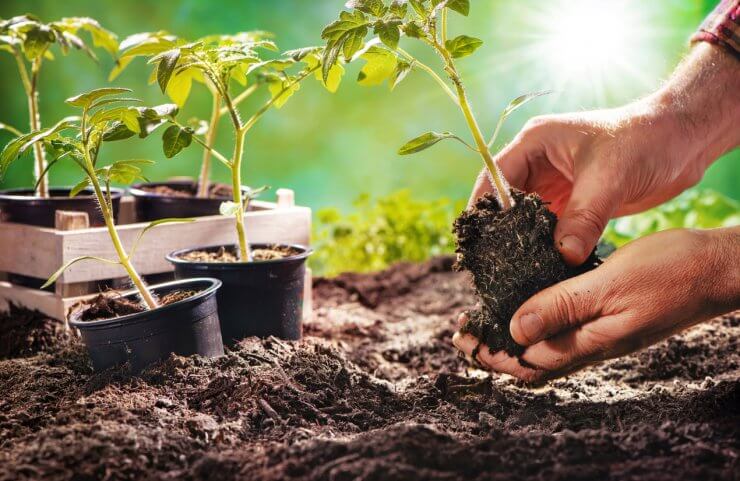
Grocery store tomatoes don’t stand a chance compared to the fresh homegrown variety. From cherry tomatoes grown in containers to heirloom and hybrid beefsteak varieties, nothing beats a tomato grown at home. That is unless you’re unlucky and find yellowing leaves on your tomato plants. Before throwing in the proverbial towel and sending your tomato plants off to that great big beefsteak in the sky, it’s worth troubleshooting first! There are many reasons why you may find yellow leaves on tomato plants. And with each reason comes its own solution, or at least prevention tactic.
Yellow leaves on tomato plants are not the kiss of death for your precious summer crop. Especially if you’ve kept a watchful eye on your tomatoes and can catch any problems before they become irreversible. Here are five common reasons you may find yellow leaves on tomato plants and what you can do to fix it and prevent it.
Discover 7 top tips for growing, harvesting, and enjoying tomatoes from your home garden—when you access the FREE guide The Best Way to Grow Tomatoes, right now!
1. Transplant shock
A common cause of yellow leaves on tomato plants is transplant shock. It usually occurs when planting young seedlings into a new garden bed or container. The shock primarily occurs in the tomato plant roots when new soil environments differ dramatically from the original starter soil. Transplant shock can also be caused by drastic changes in temperature, wind, and sunlight.
To prevent transplant shock, be sure to incorporate the same growing media or potting mix used to start your tomato plants into the garden bed or container. You’ll also want to harden off your seedlings by slowly introducing them to external temperatures and sunlight. Start by bringing seedlings into a shaded area for an hour or so. With each day, add an hour or two while also exposing them to more and more sunlight. Even if your seedlings are coming from a nursery, it’s a good idea to harden them off in your garden location.
If you notice some yellowing leaves that you suspect are from transplant shock, try snipping them off. This will help the tomato plant focus its energy on growing stronger roots.
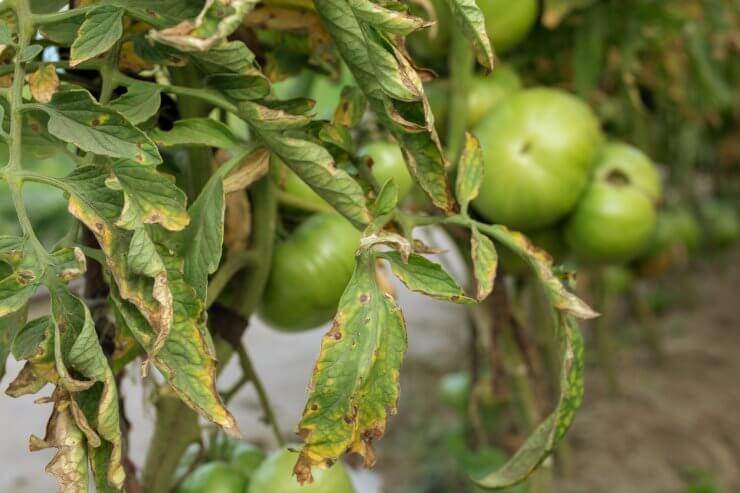
2. Blight
In general terms, there are two common types of blight that can cause yellow leaves on tomato plants. Early blight, caused by a soil-borne fungus shows up soon after the first tomatoes appear. The first markings appear brown before turning into a bull’s-eye-like shape surrounded by yellowing leaves. The danger of early blight is that it will damage tomato leaves leaving the tomatoes susceptible to too much sun.
Late blight is caused by water mold and first appears on the edges of tomato leaves. Leaves will brown and yellow, eventually causing damage to the entire plant. White mildew may also form on the lower leaves. If not tended to, late blight will spread to the tomatoes, themselves.
Blight, if caught quickly can be treated by removing affected leaves and adding mulch or straw to the base of the plant. The mulch prevents fungus and mold from splashing up onto the tomato plants during the watering process. There are also some fungicide products that can be used to treat blight-stricken tomato plants if caught early enough.
To prevent blight, you may opt to plant varieties of tomatoes that are specifically blight-resistant. Using tomato stakes and cages also helps keep tomato leaves and tomatoes off the ground and away from potential water or soil-borne contaminants. Further protect your tomatoes by using a soaker hose that waters plants at their base, rather than overhead watering which can cause more splashing and cross-contamination.
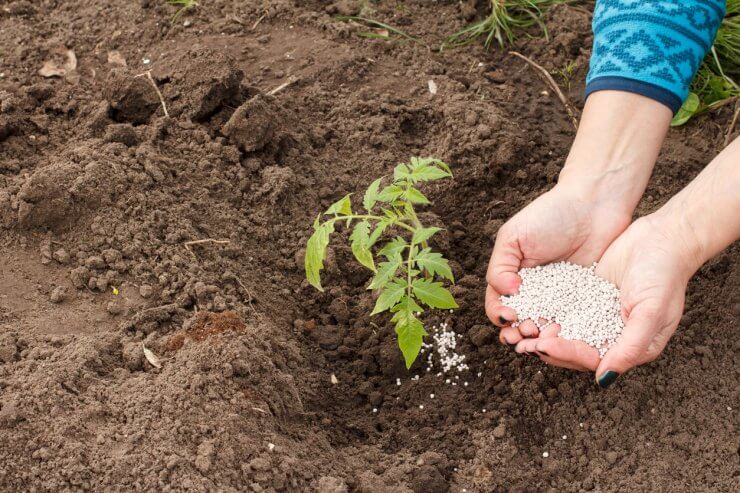
3. Nitrogen deficiency
Pale green and yellow leaves on tomato plants can be a sign of nitrogen deficiency. First signs are usually seen in old leaves, then spread to new growth. Nitrogen deficiency can be aggravated by sandy soils, drought, high rainfall, and low organic matter.
Nitrogen is necessary for plant growth and chlorophyll. To add nitrogen to the soil, consider amending soil with composted manure. Even coffee grounds can correct nitrogen deficiency.
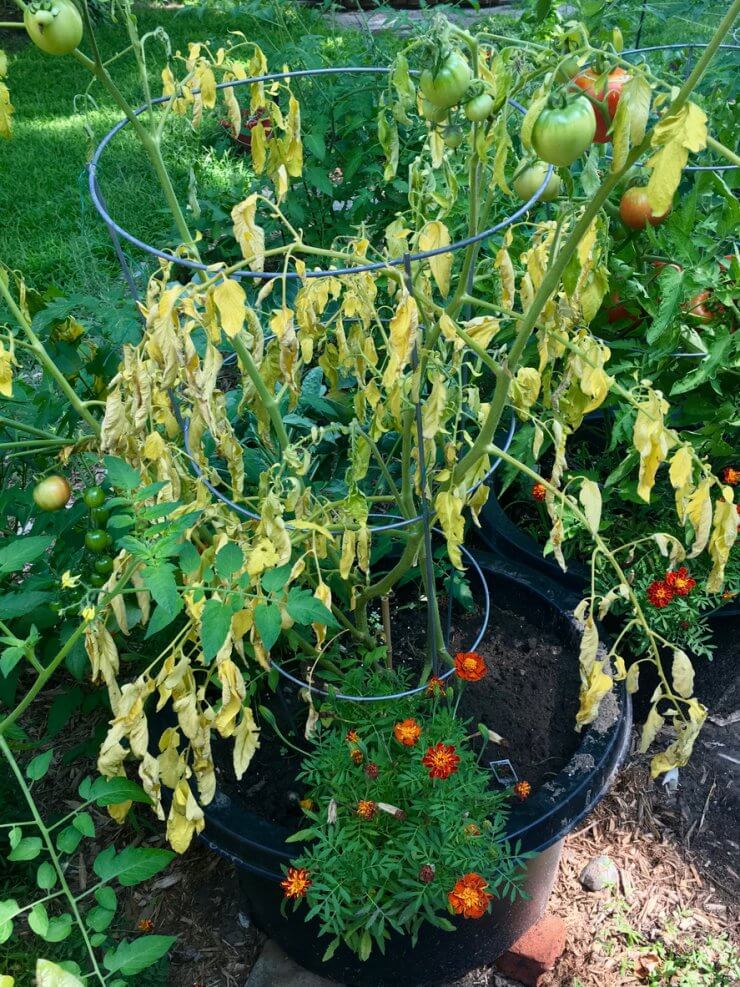
4. Overwatering
A common culprit of yellow leaves on tomato plants is overwatering. Too much water causes roots to rot while leaves and stems wilt and change color. An easy way to tell if a tomato plant is receiving too much water is if a puddle forms and remains at the base of the plant after watering.
If the overwatered plant is in a container or pot, gently pull it out of the soggy soil mix. Absorb additional moisture from the plant root using a newspaper or paper towel. Add the plant back into a container with fresh compost. If prolonged heavy rainfalls threaten tomatoes in your garden bed, cover them with plastic sheathing until the period of rain ends. Prevent overwatering by watering tomato plants in the morning so they have all day to absorb moisture.
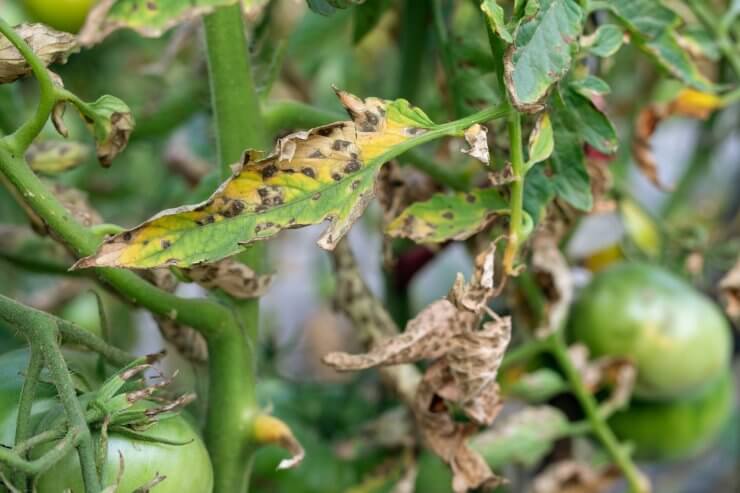
5. Fungal wilt
If you see yellow splotches and brown veins on your tomato leaves, you may be dealing with Verticillium Wilt. It’s a soil-borne fungus often found in cooler climates. To prevent this fungal wilt, well-drained soil is a must. There are also many Verticillium-tolerant tomato cultivars to choose from if you find your soil conditions and climate to be on the wetter side of things.
If you see yellowing leaves that started on one side of the plant followed by wilting and browning leaves, your tomato plant may be the victim of Fusarium wilt. Fusarium wilt is a soil-borne fungus that infects stems and leaves causing a restriction in water flow that leads to the yellowing of tomato leaves. Fusarium wilt can survive in the soil for years and is most dangerous in soil temperatures that approach 80 degrees Fahrenheit. Unlike Verticillium wilt, Fusarium wilt thrives in dry, warm soil. Choose Fusarium-tolerant tomato varieties, and avoid high nitrogen fertilizers.
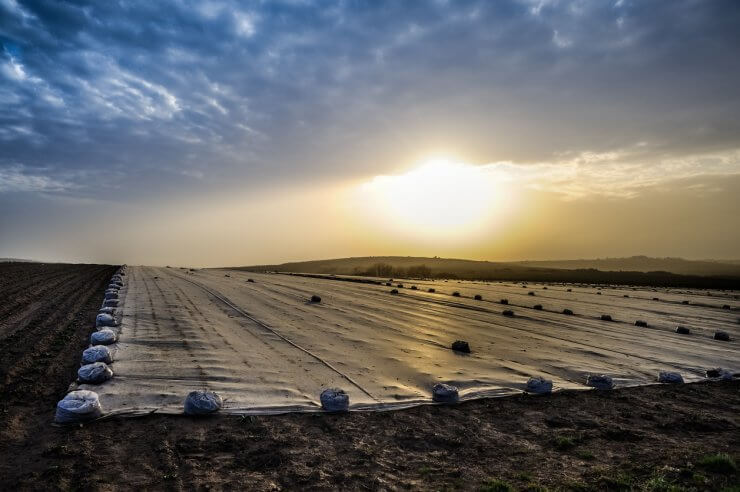
Bonus tip
To treat soil that has been plagued by various fungus wilts or blights, you may consider soil solarization, which essentially bakes out any contaminants and contaminant-spreading pests by using a clear plastic tarp over your beds and the power of the sun to heat it up.
What do you do when you see yellow leaves on tomato plants? Share your tips and tricks in the comments.
Discover 7 top tips for growing, harvesting, and enjoying tomatoes from your home garden—when you access the FREE guide The Best Way to Grow Tomatoes, right now!


 Previous
Previous



What causes the bottom of my tomatoes to turn black and rot
What causes the tomatoe to split
Generally splitting is due to over-watering.